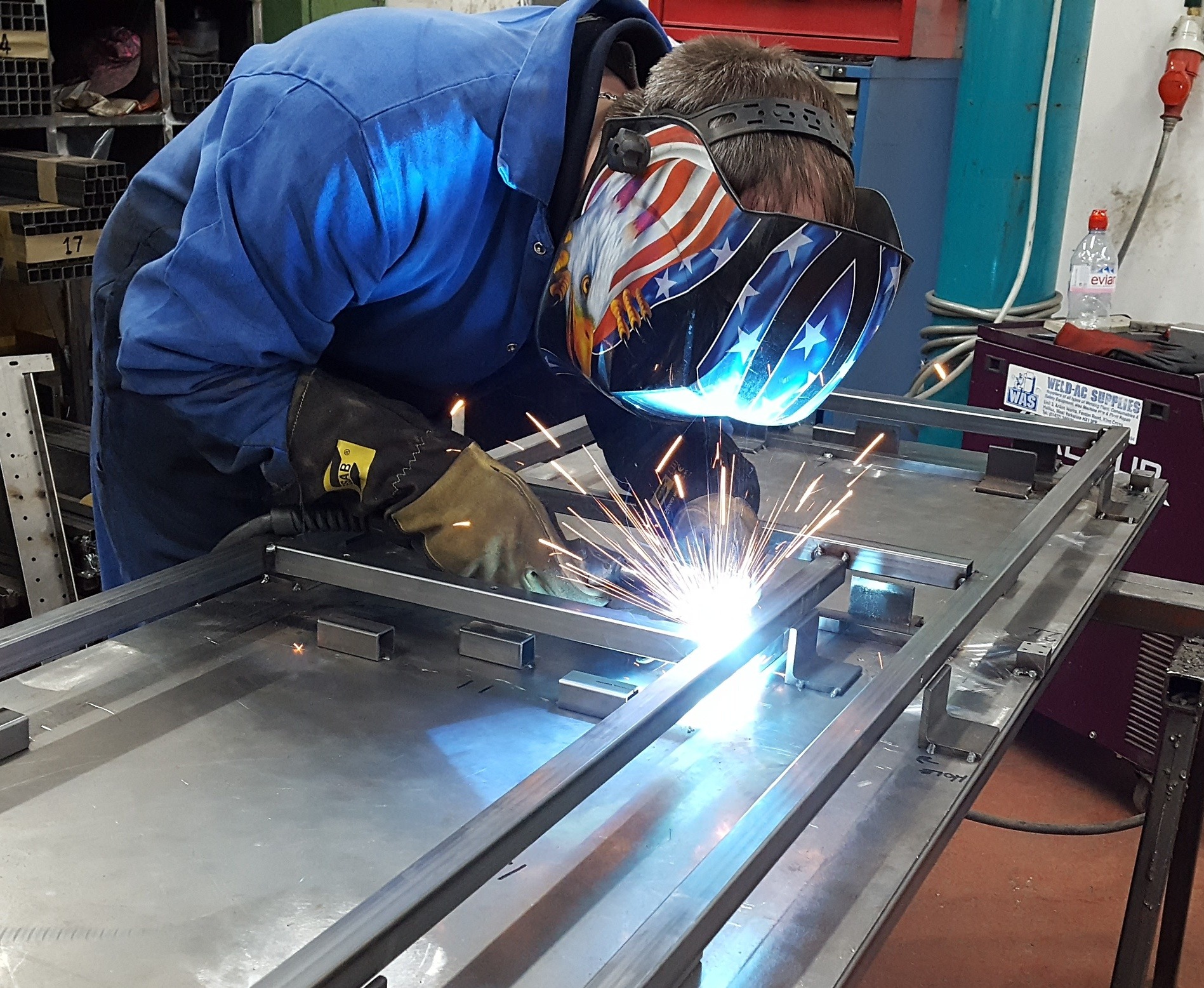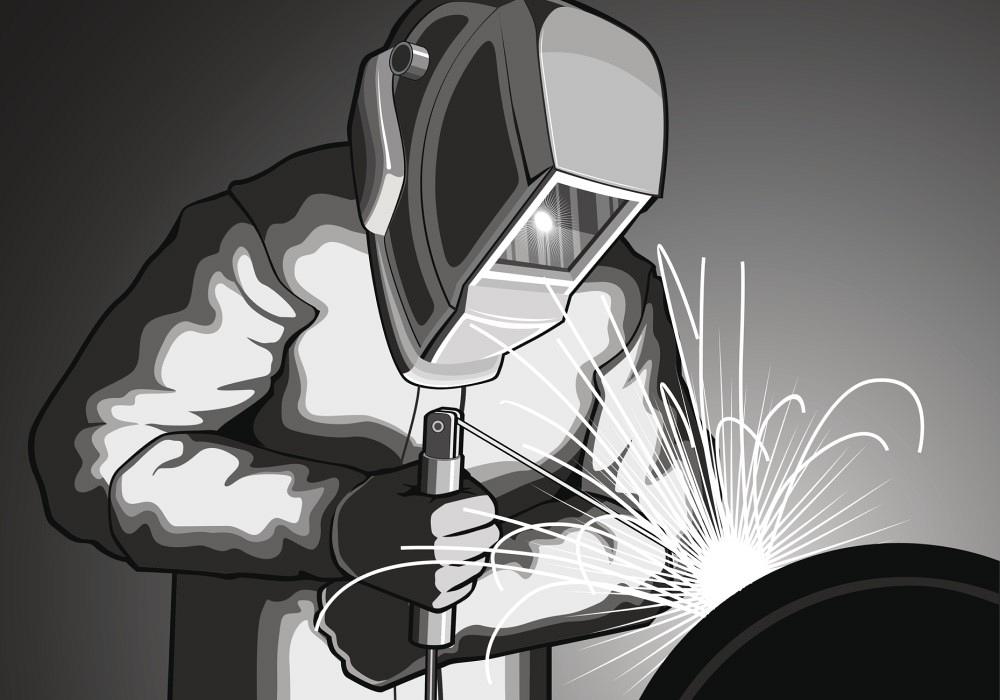All About Welding: Secret Insights Into Techniques and Finest Practices for Success
Welding encompasses a selection of methods, each matched for certain materials and applications. Understanding these techniques, such as GMAW, SMAW, and TIG, is vital for attaining perfect outcomes. The best devices and safety and security practices can not be forgotten. As prep work and repairing play essential roles in the welding procedure, grasping these elements can significantly enhance the high quality of the end product. What are the vital elements that ensure a successful weld?
Recognizing Various Welding Methods
Welding techniques include a range of techniques, each suited to particular applications and products. Among the most typical methods are Gas Steel Arc Welding (GMAW), Shielded Steel Arc Welding (SMAW), and Tungsten Inert Gas Welding (TIG) GMAW, also called MIG welding, is popular for its rate and adaptability, making it ideal for slim products. SMAW, or stick welding, is preferred for its simplicity and effectiveness in outdoor atmospheres, especially with thicker steels. TIG welding offers accuracy and control, making it appropriate for elaborate work and non-ferrous steels (Welding). Each method has its unique benefits and factors to consider, allowing welders to pick the best approach based on the project's demands, product kind, and preferred outcomes. Comprehending these methods is vital for successful welding
Necessary Welding Tools and Tools
While different welding methods need particular skills, the right devices and tools are equally crucial for attaining high quality outcomes. Crucial welding tools consists of welding devices, which vary depending upon the technique-- such as MIG, TIG, or stick welding. Protective gear, including aprons, safety helmets, and gloves, assurances safety and security and convenience during the process. Furthermore, fixtures and clamps aid safeguard products in position, making sure accuracy in welds. Consumables like welding poles, cord, and shielding gas are additionally vital parts that affect the top quality of the weld. In addition, tools such as mills and cutters facilitate surface preparation and post-weld completing, adding to a specialist result. Investing in top quality tools eventually enhances the effectiveness and effectiveness of welding tasks.
Security Practices in Welding
Proper safety and security methods are important in the welding market to protect employees from possible hazards. Welders have to wear appropriate individual protective devices (PPE), including safety helmets with correct shading, handwear covers, and flame-resistant clothes. Ample ventilation is important to minimize direct exposure to unsafe fumes and gases produced throughout the welding procedure. Additionally, workers should be educated in the right handling of welding tools to avoid crashes. Fire safety procedures, such as maintaining combustible materials away from the welding location and having fire extinguishers readily available, are required. Routine inspections of devices and offices can assist determine possible dangers before they bring about accidents. By adhering to these security techniques, welders can produce a much safer working atmosphere and decrease dangers related to their trade.
Readying Materials for Welding
Preparing products for welding is an important step that considerably affects the top quality and honesty of the end product (Montana Mobile Welding and Repair Belgrade Welding). Appropriate preparation involves cleaning the surfaces to remove contaminants such as dirt, corrosion, and oil, which can endanger the weld. Strategies such as grinding, fining sand, or utilizing solvents are generally utilized to accomplish a clean surface area. In addition, making sure that the materials fit with each other well is important; gaps can lead to weak welds. It's likewise important to take right into account the alignment and positioning of the components, as this will certainly affect the convenience of welding and the last result. Choosing the appropriate filler product and ensuring compatibility with the base metals is important for attaining strong, sturdy welds.
Tips for Achieving High-Quality Welds
Attaining premium welds requires focus to detail and adherence to finest practices throughout the welding process. Proper joint prep work is necessary, guaranteeing surface areas are free and clean from pollutants. Choosing the proper filler product and welding strategy based upon the base metals is crucial for suitable bonding. Keeping regular traveling rate and angle while welding can promote and protect against defects harmony. In addition, managing warm input is crucial; excessive heat can lead to bending and deteriorated joints. Regularly inspecting the welds throughout the procedure permits prompt adjustments if needed. Lastly, using appropriate post-weld therapies, such as cleansing and stress and anxiety alleviation, can improve the longevity and integrity of the weld, this article ultimately ensuring a successful outcome.
Fixing Typical Welding Issues
Welding commonly presents challenges that can impact the quality and honesty of the last product. Common problems such as porosity, inconsistent weld grains, and getting too hot can occur, each calling for certain fixing techniques. Recognizing these issues is crucial for welders to improve their skills and achieve optimal results.
Porosity Problems Described
Porosity can usually be ignored, it remains an essential problem in welding that can endanger the stability of an ended up product. Porosity refers to the presence of little gas pockets within the weld grain, which can lead and deteriorate the joint to early failing. This trouble normally arises from impurities, moisture, or incorrect protecting gas protection during the welding procedure. To reduce porosity, welders need to verify that the base products are clean and dry, use suitable shielding gases, and keep consistent welding parameters. Frequently checking the equipment and environment can additionally help determine prospective concerns prior to they show up in the weld. Resolving porosity properly is important for attaining strong, sturdy welds that meet high quality requirements.

Irregular Weld Beans
Inconsistent weld beads can greatly impact the top quality and stamina of an ended up item. Numerous aspects add to this issue, consisting of Visit This Link improper travel rate, wrong amperage settings, and irregular electrode angles. When the welder moves also swiftly, a grain may appear slim and lack penetration, while relocating too gradually can create too much buildup. Additionally, using the wrong amperage can lead to either damaging or extreme spatter, both of which compromise weld honesty. The welder's strategy, such as irregular lantern movement, can also bring about irregular bead appearance. To minimize these issues, welders must concentrate on keeping consistent, regulated activities and guaranteeing appropriate equipment setups to accomplish harmony in their welds. Uniformity is crucial to attaining solid and reliable welds.
Overheating and Warping Issues
Too much heat throughout the welding procedure can bring about considerable getting too hot and contorting problems, influencing the architectural stability of the workpiece. These problems commonly manifest as distortion, which can endanger alignment and fit-up, making further assembly testing. Factors adding to overheating include the option of welding specifications, such as voltage and travel rate, in addition to the sort of product being bonded. To mitigate these issues, welders must preserve consistent traveling rate and suitable warm input while keeping an eye on the workpiece temperature. In addition, preheating or post-weld warmth therapy can help reduce stresses brought on by fast cooling - Belgrade Fabrication. Regular assessment and adherence to finest practices are important in preventing overheating and making certain the durability and integrity of welded frameworks
Frequently Asked Concerns
What Are the Career Opportunities in the Welding Market?
The welding industry provides diverse occupation possibilities, including positions as welders, designers, inspectors, and instructors. Professionals can work in manufacturing, building and construction, aerospace, and automobile markets, profiting from solid demand and competitive salaries in various functions.
Just How Can I Enhance My Welding Speed Without Compromising Quality?
To enhance welding speed without sacrificing high quality, one must practice effective strategies, maintain tools, maximize setups, and enhance hand-eye coordination. Regular training and seeking comments can additionally significantly add to accomplishing much faster, top notch welds.
What Certifications Are Available for Welders?
Numerous certifications exist for welders, consisting of those from the American Welding Culture (AWS), the National Center for Construction Education and Study (NCCER), and numerous industry-specific companies. These qualifications enhance employability and Homepage show skill efficiency.
Exactly How Does Welding Impact the Qualities of Metals?
Welding affects the homes of steels by altering their microstructure, which can lead to changes in firmness, ductility, and toughness. Warmth input and air conditioning rates throughout the process greatly affect these product features.
Can I Weld Dissimilar Metals With Each Other?
